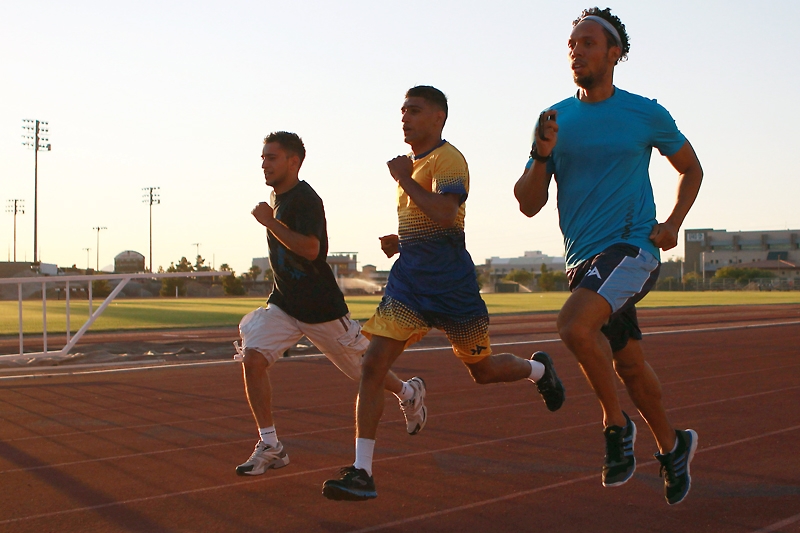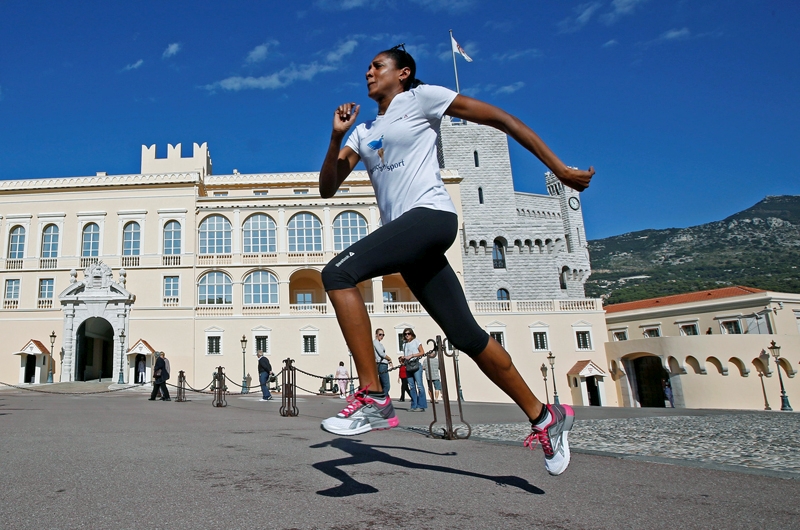You are viewing 1 of your 1 free articles. For unlimited access take a risk-free trial
Intervals for performance: should you go long or short?

Andrew Sheaf looks at new research on interval training length and the implications for athletes seeking maximum fitness gains
Interval training is a powerful tool for improving performance across a spectrum of athletic events, and is particularly powerful for improving endurance performance, regardless of the race distance. In the past, interval training has been somewhat of a catchall term that encompassed any sort of training that consisted of shorter bouts of effort at higher intensities. It was largely assumed that the effects of different interval training sessions were more or less the same.Not all intervals are equal
However, it became apparent over time that different types of intervals resulted in different types of adaptations, at least to those performing them! Eventually, research began to support this observation, and different durations of work, different intensities, different volumes, and different amounts of recovery between repetitions were explored. As a result, nuanced differences began to emerge.One of the bigger points of contention is whether shorter duration intervals or longer duration intervals are ‘better’. Clearly, they are different, but do those differences result in changes in the adaptations that occur, and which are favorable? Are certain types of intervals more appropriate for certain goals than others? In particular, it’s not clear what happens when you perform the same amount of work at the same intensity, but break it up into smaller and smaller pieces with proportional rest periods. What happens to the physiological stress? What happens to the effort required to complete these sessions? Fortunately, these are questions that have been answered in a new study.
The research
In this study, researchers from Greece sought to determine what happens when performing different interval training sessions with different interval lengths(1). The subjects in the study performed four different cycling interval sessions. After performing a control session, the subjects performed three more sessions, each at 100% of power at their peak maximum oxygen uptake (100% VO2 – hard!). During each session, the subjects performed intervals for 10 seconds, 30 seconds, or 60 seconds. The recovery periods were standardized to be 1.5 times as long as the work periods. This therefore resulted in recovery periods of 15, 45, and 90 seconds, respectively. To determine the impact of the different sessions, the researchers measured physiological variables such as lactate accumulation, oxygen consumption, and ventilation breathing rates). They also measured psychological variables such as perceived exertion and emotional responses.The findings
Regardless of the variable studied, the results were unanimous. Longer intervals resulted in higher oxygen consumption, higher lactate levels (see figure 1), higher ventilation rates, and greater perceived levels of exertion. The longer interval sessions resulted in the athletes spending significantly greater lengths of time at 80%, 85%, 90%, and 95% of maximal heart rate and oxygen consumption. In fact, only when performing the longer intervals did the athletes achieve greater than 90% of VO2max and greater than 95% of maximal hear rate (see figure 2).Figure 1: Interval length and blood lactate levels

Diamonds = 60-second intervals; triangles = 30-second intervals; squares = 10-second intervals. The 60-second intervals resulted in much higher levels of lactate, and therefore intensity.
Figure 2: Interval length and time accumulated at various VO2max levels

Only the 60-second intervals (black bars) generated significant amounts of time at or above 85% VO2max.
In summary, when intensity is kept the same, the relative amount of recovery is kept the same, and the total work is kept the same, longer intervals clearly create greater physical and psychological stress compared to shorter ones. While this finding might not be particularly surprising for those who have performed similar training sessions, it’s an important one as it validates what many have experienced. It provides critical evidence that very short intervals may not be an adequate replacement for longer ones, even when intensity is kept high and rest periods are kept short.
Practical applications for athletes
What does this mean for you, and how can you apply these findings and these ideas to your training? Well, these findings provide a valuable insight into the impact of different protocols, and how to implement different protocols depending on your goals.Clearly, if you’re looking to provide a physiological challenge to stimulate improvements in physical fitness, longer intervals at the same intensity level is the way to go. You’ll experience higher levels of ventilation, oxygen consumption, and lactate generation, all of which are potent stimulants for adaptation – ie getting fitter. This is pretty straightforward and in line with what you might expect.
While part of the appeal of shorter intervals is that they are easier, it doesn’t appear unfortunately that shorter intervals and shorter rest periods stimulate the same degree of physical stress as compared to the longer intervals. You have to sustain the intensity if you want to see the full benefits. However, it’s possible that this would change if intensity was raised in the shorter intervals as well.
In favor of short intervals
While it might seem like there is not much benefit to performing the shorter duration bouts, this isn’t the case. Remember that the shorter interval groups all ran at the same intensity and performed the same total volume. The subjects were able to get the same amount of practice at high intensity with less of the physical and psychological stress. So if you’re not comfortable moving at high intensity, or you need to improve your technique at speed, shorter work bouts can allow you to practice running, swimming, cycling, etc at higher speeds with less physiological stress. This creates a better environment for learning to move more efficiently and getting comfortable at higher speed. These shorter duration bouts can be a great introduction to higher intensity work, allowing for the eventual transition to the longer intervals. They are less stressful, and they can serve as a great starting point.Likewise, if you’re attempting to facilitate recovery during a lighter training period or while tapering but maintaining the same intensity, performing shorter intervals is a valuable strategy. You’ll experience less physical and psychological stress, which should allow for better physical recovery, even though you’re completing the same amount of work at the same intensity. This approach should allow you to maintain fitness while reducing the strain of training.
Unsurprisingly, different training protocols yield different physiological outcomes. Importantly, this study provides some important information about what those differences are. With those differences in mind, you can more effectively choose specific training regimens that more closely align with your goals. Doing so makes it more likely that you’ll accomplish the goals you set!
References
- Med Sci Sports Exerc. 2022 Feb 28. doi: 10.1249/MSS.0000000000002905. Online ahead of print
Related Files
Newsletter Sign Up
Testimonials
Dr. Alexandra Fandetti-Robin, Back & Body Chiropractic
Elspeth Cowell MSCh DpodM SRCh HCPC reg
William Hunter, Nuffield Health
Newsletter Sign Up
Coaches Testimonials
Dr. Alexandra Fandetti-Robin, Back & Body Chiropractic
Elspeth Cowell MSCh DpodM SRCh HCPC reg
William Hunter, Nuffield Health
Keep up with latest sports science research and apply it to maximize performance
Today you have the chance to join a group of athletes, and sports coaches/trainers who all have something special in common...
They use the latest research to improve performance for themselves and their clients - both athletes and sports teams - with help from global specialists in the fields of sports science, sports medicine and sports psychology.
They do this by reading Sports Performance Bulletin, an easy-to-digest but serious-minded journal dedicated to high performance sports. SPB offers a wealth of information and insight into the latest research, in an easily-accessible and understood format, along with a wealth of practical recommendations.
*includes 3 coaching manuals
Get Inspired
All the latest techniques and approaches
Sports Performance Bulletin helps dedicated endurance athletes improve their performance. Sense-checking the latest sports science research, and sourcing evidence and case studies to support findings, Sports Performance Bulletin turns proven insights into easily digestible practical advice. Supporting athletes, coaches and professionals who wish to ensure their guidance and programmes are kept right up to date and based on credible science.











